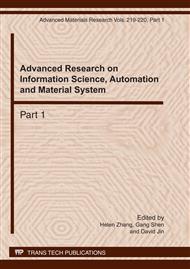p.1550
p.1554
p.1558
p.1565
p.1569
p.1574
p.1578
p.1584
p.1589
Molecular Characterization and B-Cell Epitopes Prediction of the Antigen pEtK2 of Eimeria Tenella
Abstract:
Avian coccidiosis,caused by parasites of the genus Eimeria, is a major intestinal disease of chickens. In order to develop a new generation of vaccine which can provide a safer, more effective and cost-effective approach for avian coccidiosis control, bioinformatic and molecular approaches are used to predict and analyze the molecular characterization and B-cell epitopes of Eimeria antigens. In the present study, the molecular characterization and B-cell epitopes of the antigen pEtK2 of Eimeria tenella(E.tenella)were predicted by using of bioinformatics techniques. The pEtK2 gene was predicted to encode a polypeptide of 487 amino acids with a putative molecular mass of 55.102 kDa , and a predicted isoelectric point of 5.707. The acid sequence analysis showed that the potential antigenic epitopes are situated in 1-19,51-70,135-154,237-255,279-299 and 420-439 amino acids. The results obtained from the present study may provide necessary data for further study of E.tenella pEtK2 and development of recombinant vaccines and epitope vaccines.
Info:
Periodical:
Pages:
1569-1573
Citation:
Online since:
March 2011
Authors:
Price:
Сopyright:
© 2011 Trans Tech Publications Ltd. All Rights Reserved
Share:
Citation:


